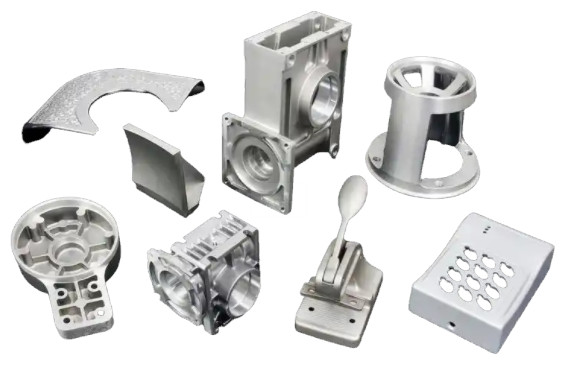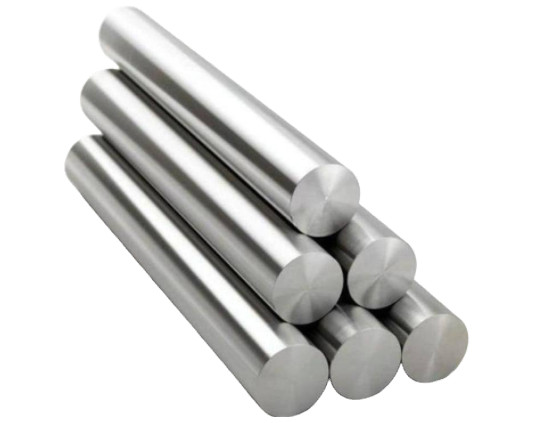2017 aluminum, a 2000-series wrought alloy, is a high-strength, heat-treatable material widely used in industries requiring robust mechanical properties, such as aerospace and automotive. This article provides a detailed examination of its composition, mechanical and physical properties, processing methods, and applications, emphasizing technical accuracy and systematic analysis.
Composition of 2017 Aluminum Alloy
The 2017 aluminum alloy, designated as EN AW-2017, AlCu4MgSi, or A92017 (UNS), is primarily alloyed with copper, which enhances its strength but reduces corrosion resistance and weldability. Other alloying elements include magnesium, manganese, and silicon, contributing to its mechanical performance. The Aluminum Association (AA) provides standardized composition limits for this alloy.
| Element | Weight Percentage (%) |
|---|---|
| Aluminum (Al) | 91.5 - 95.5 |
| Copper (Cu) | 3.5 - 4.5 |
| Magnesium (Mg) | 0.4 - 0.8 |
| Manganese (Mn) | 0.4 - 1.0 |
| Silicon (Si) | 0.2 - 0.8 |
| Iron (Fe) | 0.7 max |
| Zinc (Zn) | 0.25 max |
| Others (each) | 0.05 max |
| Others (total) | 0.15 max |
The high copper content distinguishes 2017 aluminum from other alloys, providing elevated strength but necessitating specific processing considerations to optimize performance.
Mechanical Properties
The mechanical properties of 2017 aluminum vary depending on its temper designation, such as T4 (solution heat-treated and naturally aged) or T6 (solution heat-treated and artificially aged). These properties make it suitable for applications requiring high strength and fatigue resistance.
| Property | T4 Temper | T6 Temper |
|---|---|---|
| Tensile Strength (MPa) | 425 - 450 | 430 - 460 |
| Yield Strength (MPa) | 260 - 270 | 270 - 290 |
| Elongation (%) | 12 - 15 | 10 - 13 |
| Hardness (HB) | 105 - 120 | 120 - 150 |
The T4 temper offers better ductility, while the T6 temper provides higher hardness and strength due to artificial aging. These properties are derived from precipitation hardening, where intermetallic phases like θ-Al2Cu and Q-Al4Cu2Mg8Si7 form during heat treatment.
Physical Properties
2017 aluminum exhibits physical properties that support its use in lightweight, high-performance applications. Its density is approximately 2.79 g/cm³, significantly lower than steel, making it ideal for weight-sensitive structures. The alloy’s thermal conductivity is around 134 - 150 W/m·K, facilitating effective heat dissipation in components like engine parts. Its electrical conductivity, approximately 34% IACS (International Annealed Copper Standard), supports its use in electrical applications where weight reduction is critical.
The melting range of 2017 aluminum is 513 - 641°C, allowing for effective casting and heat treatment processes. Its coefficient of thermal expansion is 23.6 x 10⁻⁶/°C, which must be considered in applications involving thermal cycling to prevent dimensional instability.
Processing and Heat Treatment
2017 aluminum is a heat-treatable alloy, with its mechanical properties enhanced through solution heat treatment and aging. The recommended solution heat treatment occurs at 495 - 505°C for 4 - 6 hours, followed by water quenching to dissolve intermetallic phases into the aluminum matrix. Natural aging (T4) at room temperature (~25°C) for 70 hours or artificial aging (T6) at 175°C for 10 - 12 hours promotes the precipitation of strengthening phases.
Machining 2017 aluminum is moderately challenging due to its strength and hardness. It is less machinable than 2011 aluminum but can be processed using high-speed tools with proper lubrication. Forging and extrusion are common forming methods, with a maximum Zr + Ti limit of 0.20% for extruded and forged products, as specified by the Aluminum Association.
Welding is not recommended for 2017 aluminum due to its high copper content, which reduces weldability and increases susceptibility to hot cracking. Instead, mechanical fastening or adhesive bonding is preferred for joining components.
Applications of 2017 Aluminum
2017 aluminum’s high strength-to-weight ratio and fatigue resistance make it a preferred material in several industries. In aerospace, it is used for structural components like fuselage frames, wing spars, and landing gear parts. Its ability to withstand cyclic loading is critical for these applications. In the automotive sector, 2017 aluminum is employed in engine components, suspension systems, and drive shafts, where its strength and lightweight properties improve fuel efficiency.
The alloy is also used in marine applications for components requiring moderate corrosion resistance, such as propeller shafts. In industrial machinery, 2017 aluminum is selected for high-stress parts like gears and fittings, where its mechanical properties ensure durability.
Corrosion Resistance and Limitations
The high copper content in 2017 aluminum reduces its corrosion resistance compared to other aluminum alloys, such as the 5000 or 6000 series. It is susceptible to stress corrosion cracking and galvanic corrosion in marine or chloride-rich environments. To mitigate this, protective coatings like anodizing or painting are often applied. Anodizing enhances both corrosion resistance and surface hardness, making it suitable for decorative and functional applications.
Another limitation is its poor weldability, which restricts its use in applications requiring welded joints. Designers must account for this by using alternative joining methods or selecting different alloys for welded structures.
Comparison with Other Aluminum Alloys
Compared to 6061 aluminum, a 6000-series alloy, 2017 aluminum offers higher tensile strength (425 - 460 MPa vs. 310 MPa in T6 temper) but lower corrosion resistance and weldability. Against 7075 aluminum, a high-strength 7000-series alloy, 2017 has lower strength (460 MPa vs. 570 MPa in T6 temper) but is easier to machine and less expensive. These trade-offs guide material selection based on application requirements.
For example, 6061 is preferred in structural applications requiring welding, while 2017 is chosen for machined components needing high strength. The choice depends on factors like cost, environmental exposure, and manufacturing constraints.
Standards and Specifications
2017 aluminum is governed by standards from the Aluminum Association, including Aluminum Standards and Data, which specify its chemical composition and mechanical properties. Other relevant standards include ISO 6361-2 for wrought aluminum sheets and ASTM B211 for bars, rods, and wires. These standards ensure consistency in material properties across industries.
The alloy is available in various forms, including sheet, plate, bar, rod, and tube, meeting specifications such as AMS, ASTM, QQ, and SAE. Distributors typically stock 2017 aluminum in T4 and T6 tempers, with mills offering larger quantities for specific applications.
Key Considerations for Using 2017 Aluminum
When selecting 2017 aluminum, engineers must consider its reduced corrosion resistance and poor weldability. Protective coatings and alternative joining methods can address these limitations. Additionally, the alloy’s heat treatment parameters must be precisely controlled to achieve desired mechanical properties. Overheating during solution treatment can lead to grain growth, reducing strength, while under-aging may result in suboptimal hardness.
Cost is another factor, as 2017 aluminum is more expensive than 6000-series alloys but less costly than 7000-series alloys. Its availability in various forms ensures flexibility in manufacturing, but long lead times for large mill orders (10 - 50 weeks) may require planning.
Recycling and Sustainability
2017 aluminum is recyclable, with scrap recycling processes enabling the production of high-quality alloys. Solution heat treatment and aging can restore mechanical properties in recycled 2017 aluminum, making it a sustainable option for industries aiming to reduce environmental impact. Research indicates that recycled 2017 aluminum can achieve tensile strengths of up to 450 MPa with proper processing.

Conclusion
2017 aluminum alloy is a versatile, high-strength material suited for demanding applications in aerospace, automotive, and industrial sectors. Its copper-rich composition enhances mechanical properties but introduces limitations in corrosion resistance and weldability. By understanding its properties, processing requirements, and applications, engineers can effectively utilize 2017 aluminum in designs requiring a balance of strength, weight, and durability.
